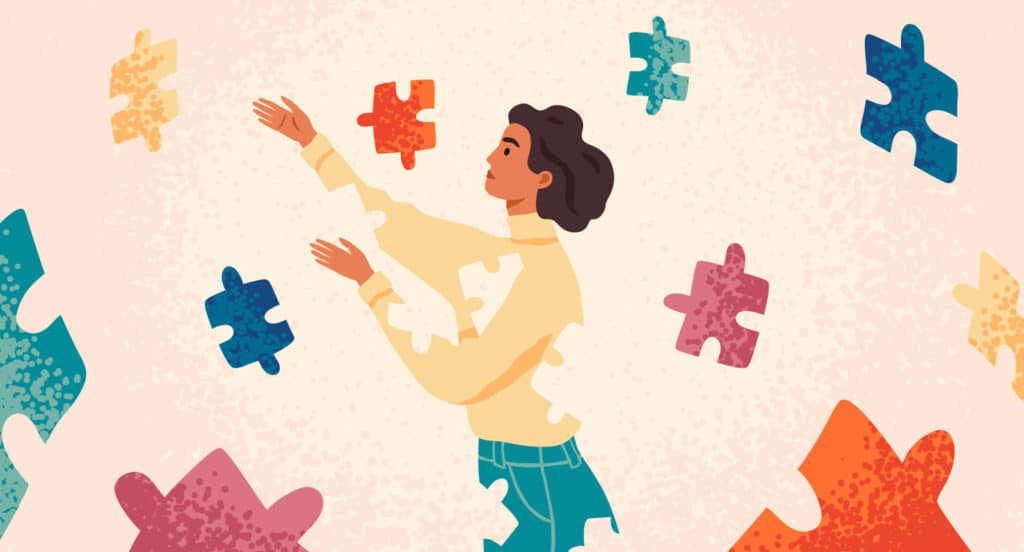A Common Combination: Psychological Disorders and Substance Abuse
It is not uncommon to talk about substance abuse and psychological disorders in the same breath. This is because both of these afflictions tend to be a prevalent combination. It is not uncommon to discover that a psychological condition is the cause of addiction. A person who is struggling with an addiction may be struggling with a mental illness too. Many mental health disorders can become worse whenever substance abuse occurs. There are several common psychological disorders to be aware of, and it is not uncommon to find these disorders weaved in with addictions.
Mental Illness: Fear of a Stigma
Mental illness and psychological disorders are more common than many people realize. It ought to be known that the majority of people do not admit that they are suffering from this type of issue. A lot of people will not disclose to having a mental illness because there may be a stigma associated with it. Many people will suffer in silence as opposed to admitting that they need relief from a psychological disorder. It is not uncommon for some people to try to cope with their mental health issues on their own without seeking help or treatment. The most common psychological disorders can be treated. Many people have been able to overcome their problems with the help of quality treatment. Some people will self-medicate their emotions to get relief from their psychological disorders. They may use various drugs to help them to cope because they are unable to cope with their mental health condition on their own. The drugs will keep their feelings and thoughts squashed down inside of them rather than seek quality treatment and face their disorder. The self-medication only appears to provide relief. When the issues and the feelings are covered up by the attempts to self-medicate, the person can get caught up in a vicious cycle. The cycle revolves around substance abuse and mental illness. The psychological condition begins to rise in a person, they are unable to cope with the powerful emotions, and they reach for a drug to calm them and provide relief. This is the cycle that tends to be vicious because it can keep a person spiraling downward. A person may not admit to having a psychological disorder because they fear the stigma that may be associated with it, so they may choose not to seek treatment, and their condition does not get better.

The Dual Diagnosis and Common Mental Disorders
The dual diagnosis is a condition. A person suffers from substance abuse and a mental disorder at the same time, and they are diagnosed with two conditions at the same time. They tend to go hand-in-hand because the cycle has not been broken. Many people fear to get the needed treatment and the psychological disorder, and the symptoms only worsen through time. The following are the most common mental disorders that can be the cause of substance abuse:
Generalized Anxiety Disorder; this is severe anxiety that interferes with daily living. It can happen at any age, and women tend to be more affected by this as compared to men. Often the symptoms can be controlled with the help of treatment
Bipolar Disorder or BPD; this may be affecting 60 million people across the globe. The symptoms usually emerge between the ages of 15 and 25. It can begin at any age. There is not a formal cure; the symptoms can be managed effectively with treatment
Eating Disorders; approximately 13 percent of all women 50 and over have symptoms of an eating disorder. There is an increase in children being diagnosed with this order, and it continues to rise. The person may not be underweight because binge eating and bulimia are part of this disorder. Anorexia is known as the third most common mental illness among adolescents
Psychotic Disorder; this may include Schizophrenia, Brief Psychotic Disorder, Schizophreniform Disorder, Schizoaffective Disorder, Delusional Disorder, and Substance-Induced Psychotic Disorder
Major Depressive Disorder or MDD; this is a top cause of disability in America. It dramatically impacts those between the ages of 15 and 44 years old
Obsessive-Compulsive Disorder or OCD; this is very close to the anxiety disorder in terms of symptoms, and often depression will come with it
Social Anxiety Disorder or SAD; this affects approximately 15 million adults and 2.7 percent of the American population. This usually begins at the age of 13. A high percentage of people live with the symptoms for over ten years before seeking treatment
Post Traumatic Stress Disorder or PTSD; this impacts the lives of at least 7.7 million adults in America. Women tend to be affected by this at a higher rate. Childhood sexual abuse fosters the chances of this diagnosis
Specific Phobias; various phobias will impact the lives of 19 million adults in America. The symptoms usually start during childhood at age seven years
Panic Disorders or PD; this type of disorder impacts the lives of six million adults in America and women tend to be twice as likely to experience this
Related and Common Mental Illness; it ought to be known that many people who suffer from an anxiety order will often have a physical illness or co-occurring disorder. This tends to create more symptoms while making a recovery difficult. Both psychological disorders must be treated, and this includes any substance abuse too. The majority of co-occurring disorders are known as dual diagnosis. Many of the psychological disorders usually play a role in the substance abuse that comes with the disorder.

